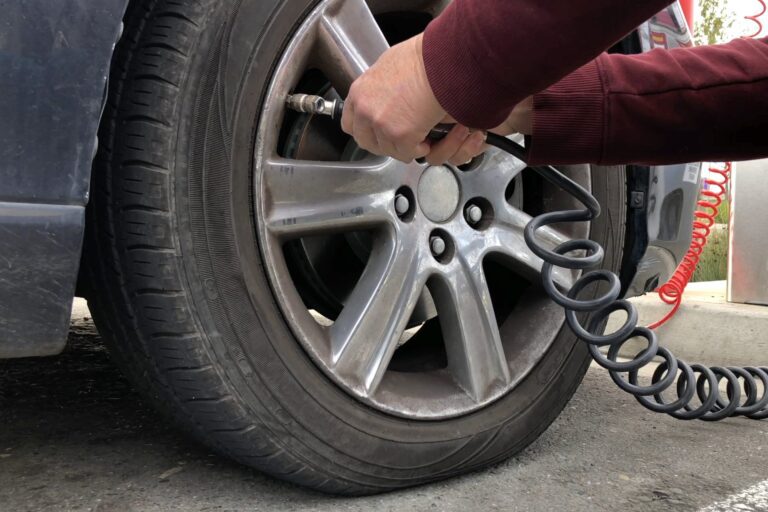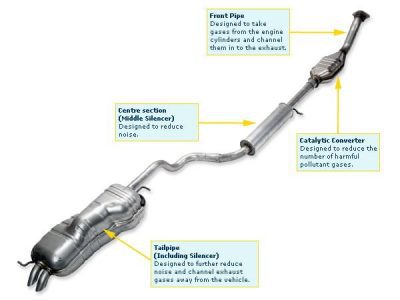Exhaust Flange Leak: Troubleshooting Tips for a Silent Fix
An exhaust flange leak is a problem that occurs when the connection between the exhaust manifold and the exhaust pipe is not sealed properly. This can lead to a variety of issues, including decreased engine performance, increased emissions, and a loud and unpleasant noise coming from the exhaust system.
Additionally, the leaking gases can be harmful to the environment and to the health of those inside the vehicle. To prevent further damage and ensure the safety and efficiency of the vehicle, it is important to address an exhaust flange leak promptly.
We will discuss the causes, symptoms, and solutions for an exhaust flange leak, as well as provide some tips for prevention.
Signs Of An Exhaust Flange Leak
Signs of an Exhaust Flange Leak:
Excessive noise from the exhaust system: One of the key indicators of an exhaust flange leak is the presence of a loud, rumbling noise coming from the exhaust system. This noise is usually more noticeable during acceleration or when the engine is under load. It is important to address this issue promptly as it can negatively impact the overall performance of the vehicle.
Exhaust fumes inside the vehicle: Another sign of an exhaust flange leak is the presence of exhaust fumes inside the vehicle. If you notice a strong smell of exhaust while driving, it could indicate a leak in the flange. This can be not only unpleasant but also hazardous, as inhaling exhaust fumes can be harmful to health.
Decreased performance and fuel efficiency: An exhaust flange leak can also lead to decreased performance and fuel efficiency. This is because the leak causes a disruption in the proper flow of exhaust gases, resulting in a loss of power and decreased fuel efficiency. If you notice a sudden decrease in performance or an increase in fuel consumption, it’s important to have the exhaust system inspected for any possible leaks.
Identifying The Location Of The Leak
One way to identify the location of an exhaust flange leak is by inspecting the exhaust flange area. Start by visually examining the flange for any signs of damage or corrosion. Look for cracks, holes, or gaps in the metal. It can be helpful to use a flashlight to get a better view of hard-to-reach areas.
Another method to detect leaks is by using a soapy water solution. Apply the solution around the flange and carefully observe for any bubbles or foaming. The presence of bubbles indicates a leak and can help pinpoint the exact location.
Additionally, listening for hissing sounds can provide clues about the leak’s location. Start the engine and pay close attention to any unusual noises near the exhaust system. A hissing sound often indicates a leak in the flange area.
Regular inspection and maintenance of the exhaust flange area are crucial to detect and address any leaks promptly. Identifying the location of the leak is the first step towards resolving the issue and ensuring optimal performance of your vehicle’s exhaust system.
Diy Fixes For An Exhaust Flange Leak
An exhaust flange leak can be a frustrating problem, but there are a few DIY fixes that you can try to resolve it. One common cause of a leak is loose bolts and connections. It’s important to tighten any loose bolts or connections that you find in the exhaust system. This can help create a tighter seal and prevent any escaping gases. Another option is to apply a high-temperature exhaust sealant. This type of sealant is designed to withstand the heat of the exhaust system and can help fill in any small gaps or cracks where the leak may be occurring. Lastly, using exhaust clamps and gaskets can provide an additional layer of protection and help create a better seal. By following these DIY fixes, you may be able to successfully address an exhaust flange leak without the need for professional help.
Common Mistakes To Avoid
When it comes to fixing an exhaust flange leak, it is important to avoid some common mistakes that can further worsen the problem. One of the common mistakes is over-torquing the bolts. Over-tightening the bolts can lead to damaged threads or even breakage, making it harder to fix the leak.
Misaligning the exhaust pipes is another mistake to avoid. When installing or replacing the exhaust flange, it is crucial to ensure proper alignment to prevent any gaps or misfits that could result in a leak. Proper alignment will help create a tight seal between the flanges.
Using low-quality sealants or gaskets is another pitfall to avoid. It is essential to invest in quality sealants and gaskets that can withstand high temperatures and provide a reliable seal. Cheaper options may deteriorate quickly, leading to leaks and additional repairs.
When To Seek Professional Help
If you notice extensive damage or rust on the exhaust flange, it may be time to seek professional help. Trying to fix the leak on your own can be challenging, especially if you have limited access to the necessary tools. Despite your DIY attempts, if you are unable to fix the leak, it’s best to leave it to the experts. Professional technicians have the expertise and experience to properly diagnose the issue and provide the right solution. They will also have access to the specialized tools required for the repair. By seeking professional help, you can ensure that the exhaust flange leak is fixed correctly, preventing further damage and ensuring optimal performance of your vehicle.
Preventing Future Exhaust Flange Leaks
Regular inspection and maintenance are crucial in preventing future exhaust flange leaks. By conducting routine checks, you can identify any possible issues before they escalate into major problems. Pay close attention to the condition of the flanges, gaskets, and seals, ensuring they are in good shape and not showing signs of wear and tear. Using high-quality gaskets and seals is essential as they provide a tight seal and minimize the risk of leaks. Investing in reliable components can save you from potential headaches down the road.
Moreover, it is important to avoid exposing your exhaust system to excessive heat and extreme driving conditions, as these factors can contribute to flange leaks. Heat can cause gaskets and seals to deteriorate faster, while aggressive driving can put additional strain on the exhaust system.

Credit: www.amazon.com
Frequently Asked Questions On Exhaust Flange Leak
What Are The Symptoms Of An Exhaust Flange Leak?
Symptoms of an exhaust flange leak include loud noise, decreased performance, a vibrating sensation, and a noticeable odor of exhaust fumes inside and outside the vehicle.
How Much Does It Cost To Fix A Leak In The Exhaust Flange?
The cost to fix a leak in the exhaust flange varies depending on the make and model of the vehicle. Generally, it can range from $100 to $300 for parts and labor. It’s best to consult a mechanic for an accurate estimate.
Can You Drive With A Broken Exhaust Flange?
Yes, you can still drive with a broken exhaust flange, but it’s not recommended. A broken flange can cause excessive noise, loss of power, and exhaust leaks. It’s best to get it repaired as soon as possible to avoid further damage to your vehicle’s exhaust system.
Is It Ok To Drive With An Exhaust Leak?
Driving with an exhaust leak is not recommended as it can lead to potential hazards. An exhaust leak can release harmful gases into the vehicle, impacting the driver’s health, and can also cause damage to other parts of the car.
It is advisable to have the exhaust leak fixed by a professional mechanic.
Conclusion
Addressing an exhaust flange leak is crucial in order to prevent further damage to your vehicle and maintain optimal performance. By understanding the signs and causes of this issue, you can take necessary steps to rectify it and avoid costly repairs down the line.
Regular inspection, timely maintenance, and professional assistance are essential in ensuring the longevity of your exhaust system. Don’t ignore this problem, as prompt action will save you from potential headaches and expenses in the future.







